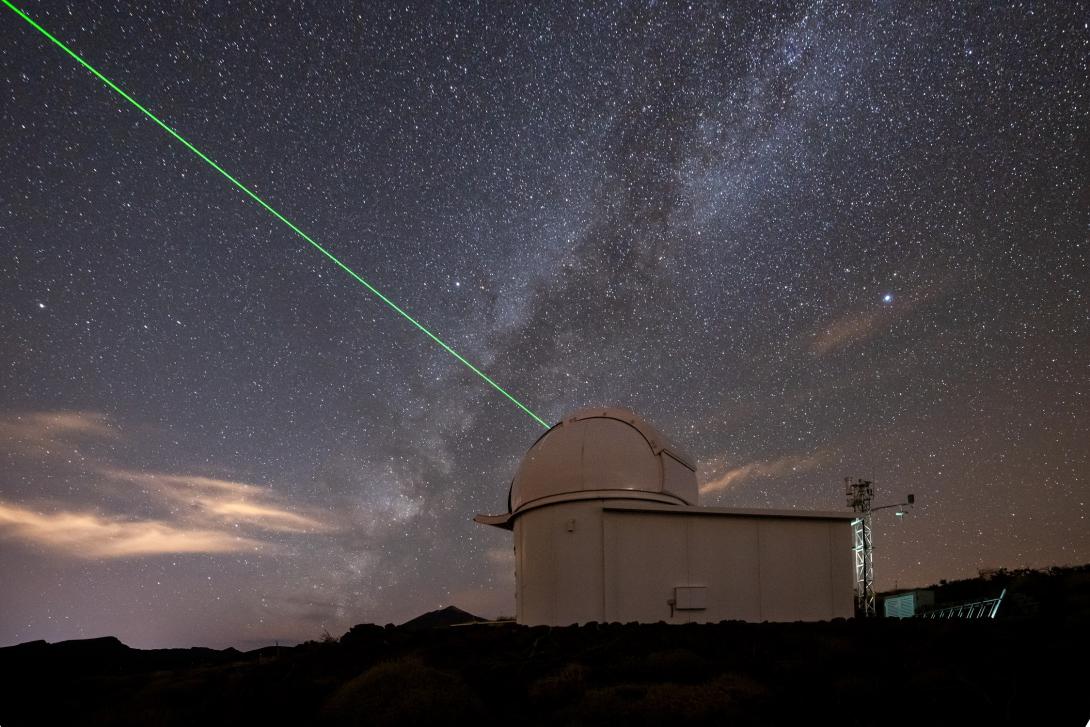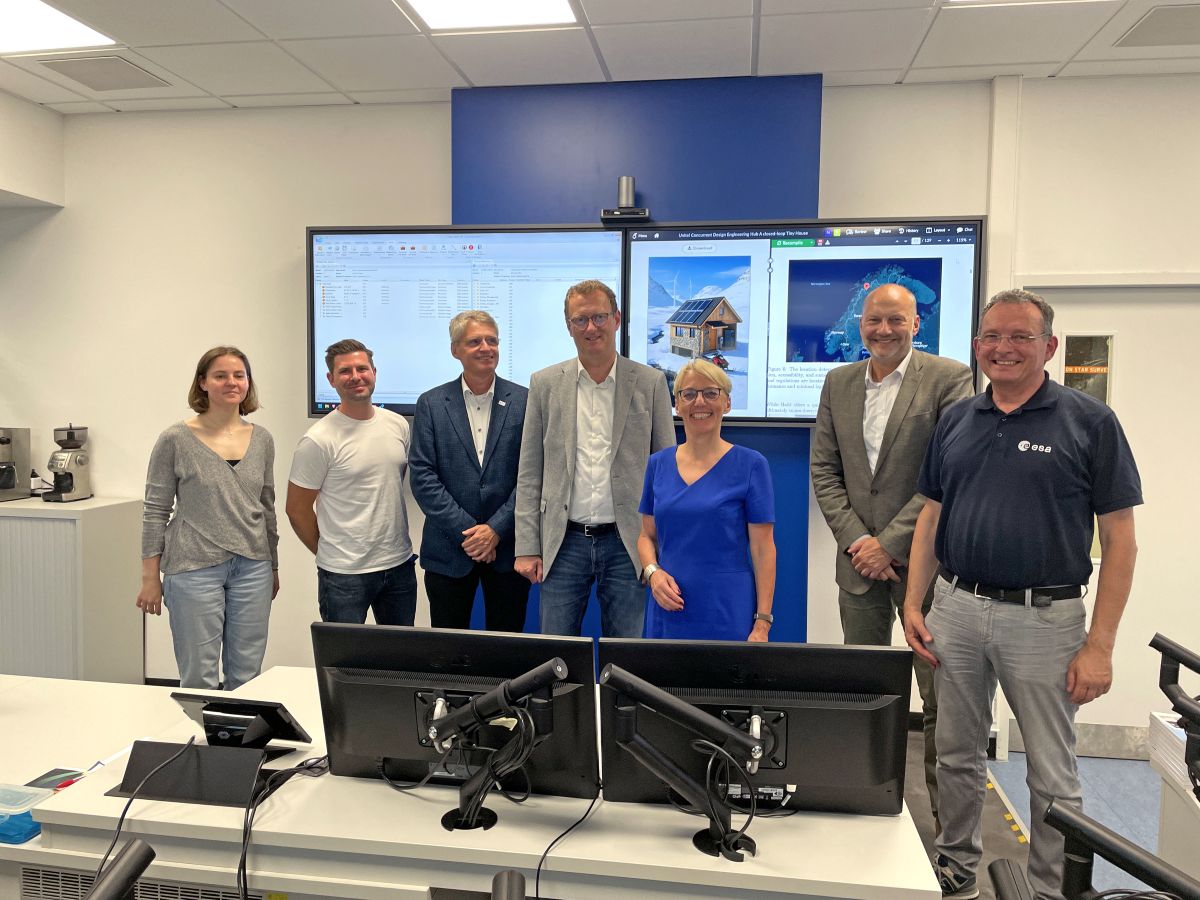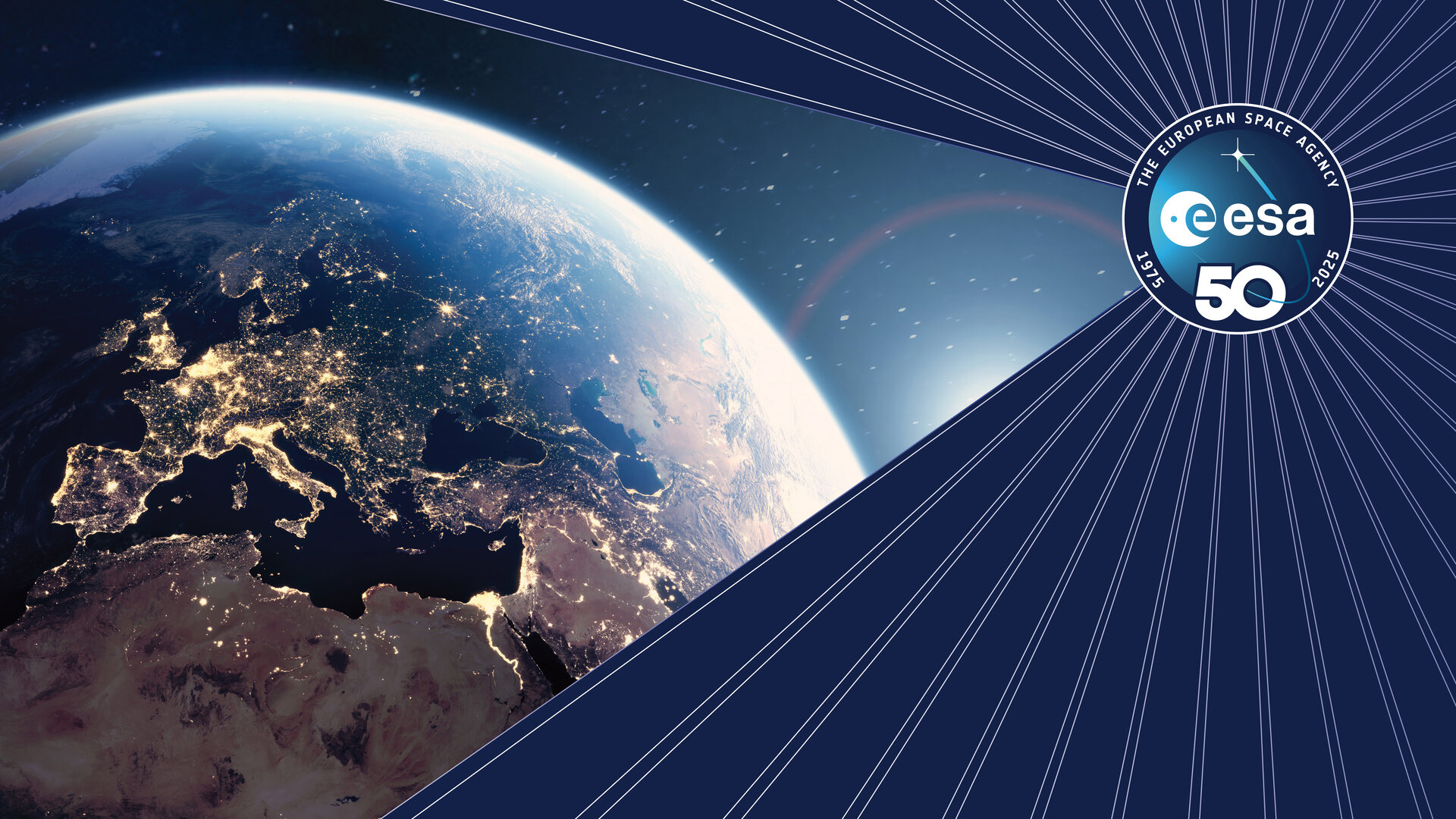Astrolight and ESA test innovative portable laser communication system
Image: ESA / Astrolight
Lithuania-based company Astrolight has successfully performed a satellite-to-ground laser communication test using their portable OGS-1 optical ground station and the Osiris laser transmitter system onboard the ‘Flying Laptop’ satellite.
The objective of the test was to demonstrate a reliable, high-bit-rate, ad-hoc low-Earth orbit (LEO)-to-ground laser communication capability between a representative satellite and Astrolight’s OGS-1 terminal.
To conduct the test, the company transported their OGS-1 system by car and conventional passenger aircraft from Lithuania to ESA’s Izaña-1 (IZN-1) ground station, located at Teide Observatory in Tenerife, Spain.
“The result demonstrates the ruggedness of the Astrolight terminal, which provided excellent performance despite being subject to high mechanical stress during the trip to Teide Observatory and operating in strong wind conditions on site,” says Laurynas Mačiulis, Astrolight co-founder and CEO.
ESA supports new industrial application
IZN-1 is operated from ESA’s ESOC operations centre in Darmstadt, Germany, and is currently being upgraded with an optical communication package. ESA teams received and tracked the laser light signal from the satellite passing overhead using the IZN-1 station’s laser terminal at the same time as the test of Astrolight’s portable ground station.
“By performing this test with two terminals simultaneously, we can see and study differences in the links, which is very useful for joint assessment and for optimising the respective systems – there was a lot of engineering discussion which was very fruitful for both ESA and Astrolight,” says Clemens Heese, Head of the Optical Technologies Section at ESA.
“This test was important because a portable optical ground station that you can pack in a suitcase and move to a place where you need to send or receive data offers a lot of possibilities for connecting remote locations – like disaster areas – that don’t have data communications.”
Strong need for satellite laser communication
Laser communications offer increased bandwidth over radio and will help the space sector address the rising volume of data that needs to be transmitted from Earth to space and vice versa across spaceflight applications such as weather forecasting, broadcast, data relay, scientific and climate data gathering, navigation services and human missions. Laser communication is also secure – it has a much narrower beam width and is more difficult to intercept or jam than radio.
“We are at the technology development stage where the support of ESA and its infrastructure is crucial, and we are extremely satisfied with our cooperation,” says Laurynas Mačiulis.
More details are available in the full Astrolight press release
Watch the test campaign video from Astrolight
Read more about ESA’s IZN-1 ground station




